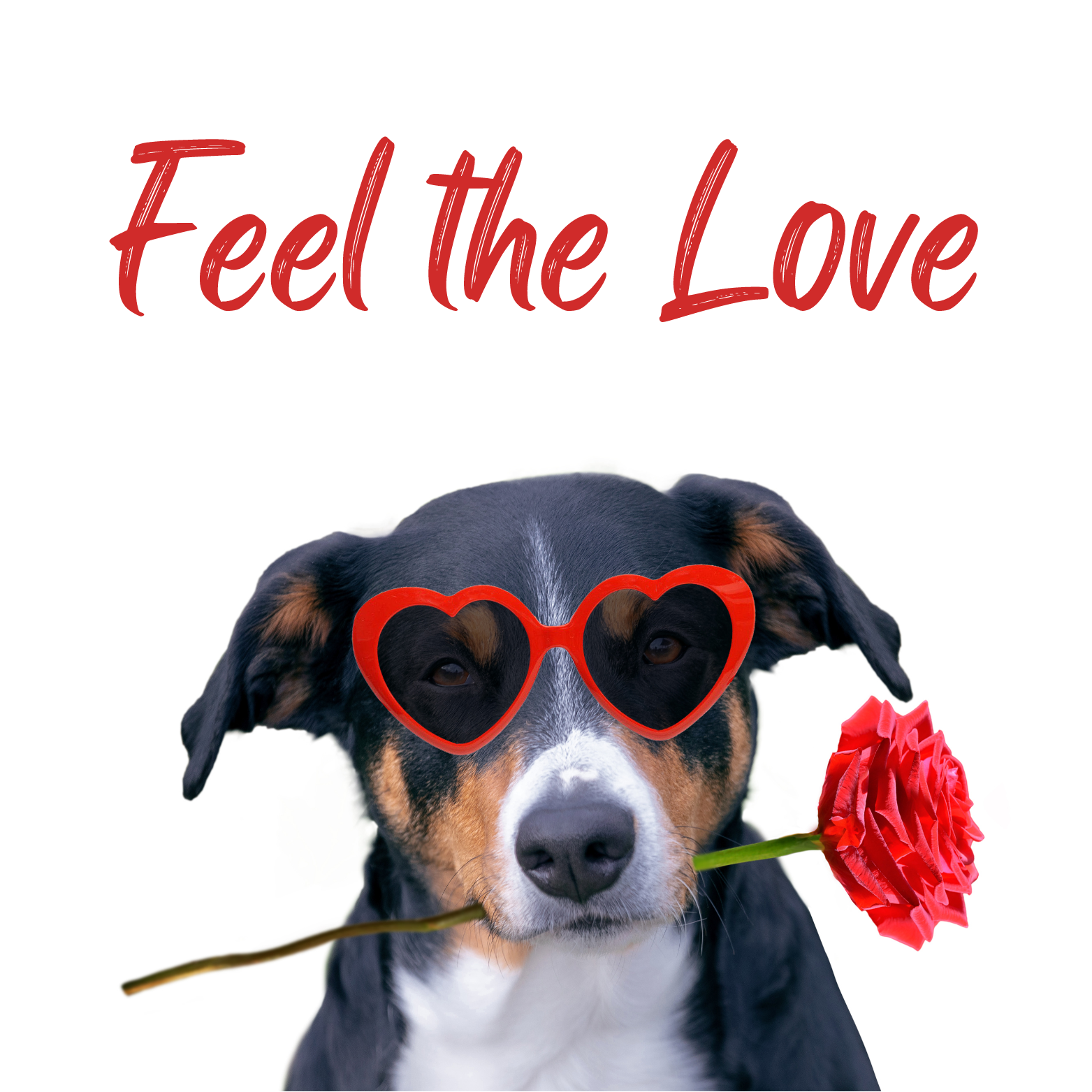
As Valentine's Day approaches, it's the perfect time to extend traditional notions of affection beyond our romantic relationships. While interspecies cards decorated with red hearts might be a stretch, dogs nonetheless display behaviors and social bonding indicative of far greater emotional awareness than many assume. But how do you know if your message of love is getting through to your dog?
Can we draw parallels to author Gary Chapman's five famous "love languages?" Might physical touch, quality time, or gift-giving unlock our pups' emotional preferences? Understanding dog affection preferences can strengthen communication, build trust, and ensure behavioral wellness. So, let's look at how various forms of emotional expression may transcend species barriers, particularly in our relationships with our dogs.
Physical Touch
Is physical touch one of your dog's love languages? You can discern this preference simply by observing their behavior. Given a choice, does your pup opt to nap curled beside you on the couch? Do they lean in when being pet and then flip over, soliciting belly rubs? Or does yours prefer solo relaxation in a dog bed across the room?
As with humans, ensuring consent remains paramount before handling a dog. Pay attention to body language cues signaling their favorite touch type and duration. While many dogs adore whole back scratches and chest rubs, others tolerate only limited petting.
For dogs who crave physical contact, options range from therapeutic massages to soothing brushing sessions to safe, sustained snuggles. Aim to nurture trust by noticing and offering the types of touch your dog seeks. Mutually enjoyed contact will deepen your emotional connection with your pup while facilitating handling in more utilitarian contexts, such as vet visits.
Quality Time
Being inherently social creatures, dogs often view quality time with you as a top love language. But how can busy owners carve out meaningful moments amid chaotic life schedules? Try these tips for showing your love in manageable increments. Establish set weekend hangouts for doing an activity your dog adores. Try long, sniffy walks, exploring the coast, or chilling on the couch for a movie night.
Schedule five to ten-minute pocket sessions sprinkled throughout your weekday mornings or evenings for quick training sessions, coat brushing, or silly play breaks.
Out and about running errands? Bring your buddy for some quality ride-along time. This is especially great if you can top it off with a trip to your local drive-thru for a pup cup or pup patty, guaranteed to set any dog's heart aflutter.
Set phone reminders for quick 'doggy dates' to ensure you follow through with dedicated, undivided attention.
Acts of Service
As domesticated dependents, dogs rely on human acts of service to supply their fundamental daily needs. After all, opening doors or bags of kibble can pose quite a challenge without opposable thumbs. As caregivers who love them, it's our responsibility to provide:
Wholesome nutrition and ample meals; Regular bathroom breaks (minimum three walks daily for homes without fenced yards);
Good hygiene through regular brushing and nail upkeep;
Routine veterinary wellness visits and treatment for any medical issues; Oversight of behavior signals, with intervention if disorders emerge;
By dependably and compassionately meeting these essential needs for our pups, we express a level of care that transcends mere room and board. These are the most basic love languages for all dogs.
Gift Giving
When it comes to gift-giving, most dogs prove easy to please. After all, is there a dog alive who doesn't cherish edible treats? Snack time almost always sparks joy.
But not all gifts have to be food. Consider safe 'destructive' outlets that allow your pup to engage in their ancestral instincts of digging and shredding. Offer non-toxic, recyclable packaging for tearing apart, flip fleece blankets into makeshift foraging outlets, or add a sandpit to the backyard for buried bounty hunting. Develop a rotating repertoire of puzzle feeders like snuffle mats, food-stuffed Kong toys, or wobble kibble dispensers to keep meals exciting and mentally stimulating.
And while "never feed from the table" is a popular concept, showing appropriate snack generosity in moderation will make most dogs happy without necessarily increasing begging. Clear contextual cues are crucial to preventing pushy behavior. So indulge, but use common sense!
Words of Affirmation
Regarding canine love languages, verbal praise and puppy talk likely rank lowest for most dogs, even if a few pups lean into baby babble. Despite what Lassie reruns have programmed us to believe, real live dogs don't grasp our spoken words beyond learned cues. Instead, owners commonly build conditioned associations through consistent pairings, aligning their family dialects with favorable activities.
While playfully singing melodious monikers during dinner prep or playtime is harmless, don't let fictional Collies fool you. There's no need to pen sonnets for pets, who will undoubtedly be better wooed through other love languages instead.
As with humans, your relationship with your dog thrives on reciprocal understanding that outlasts surface-level puppy love. So, indulge in devoted days together. Lavish gifts express a generosity of spirit. Whisper terms of endearment in that sweet secret tongue only soulmates speak.
At the end of all our aimless ambling, games of chase, and quiet cuddling sessions, we comb back shaggy bangs to gaze at peace into kindred eyes. And we recognize that a love cloaked in fur is a true love nonetheless.







